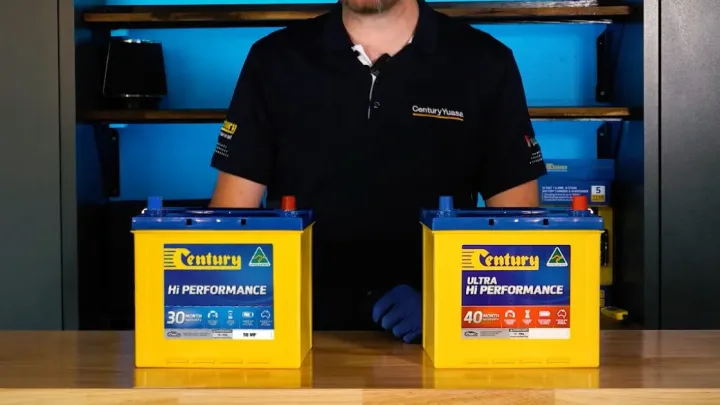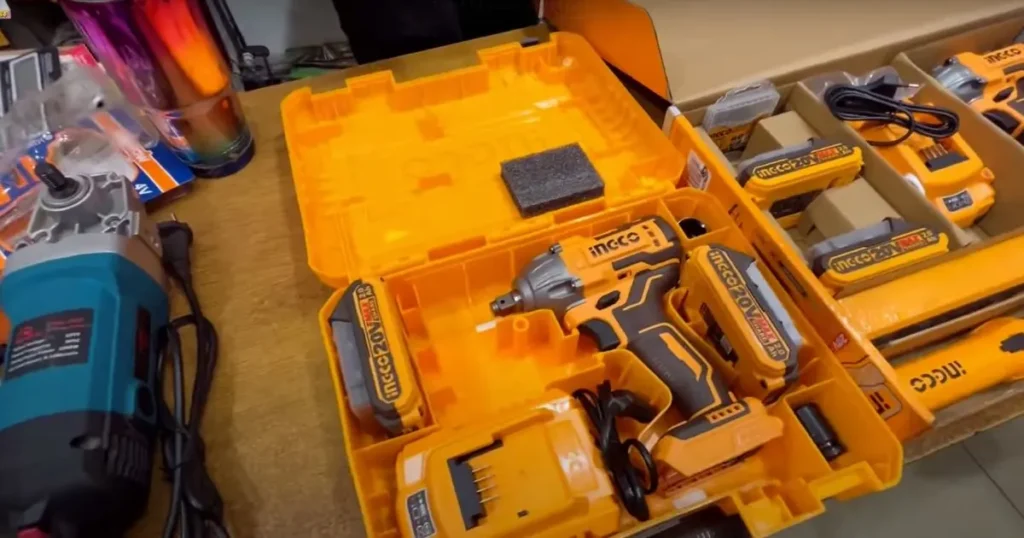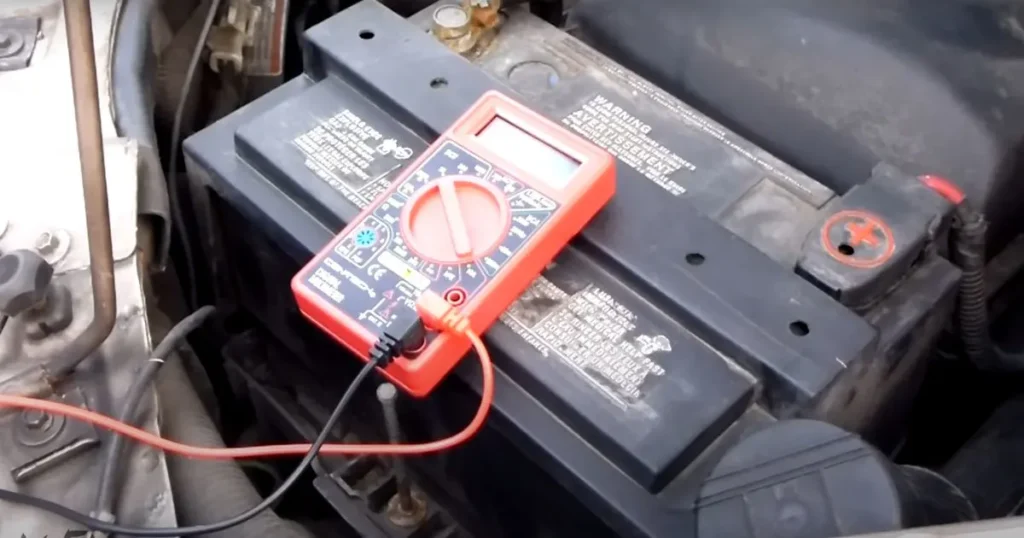
To clean car battery plates, first, disconnect the battery and then use a mixture of baking soda and water. Apply this mixture with a toothbrush to scrub the corrosion off gently.
Maintaining a clean and functional car battery is essential for ensuring your vehicle's reliability and longevity. Over time, battery plates can accumulate corrosion, leading to decreased performance and potentially leaving you stranded.
Regular cleaning of these plates is a straightforward task that can prevent such issues, saving you time and money. This simple maintenance step can significantly extend the life of your battery, ensuring it delivers the power your car needs to start and run efficiently. By keeping the battery plates clean, you also maintain the overall health of your vehicle's electrical system, contributing to smoother rides and fewer unexpected repairs.
Introduction To Car Battery Plates Maintenance
Car battery maintenance is key to reliable vehicle performance. It powers the car's electrical systems. Without it, cars won't start. Regular checks ensure it runs smoothly.
Importance Of Regular Cleaning
Cleaning battery plates is crucial. It extends battery life. It also prevents power loss. Clean batteries mean fewer breakdowns. This saves money and stress.
- Prevents build-up: Acid and dirt won't accumulate.
- Ensures efficiency: Electrical connections stay strong.
- Avoids issues: Early cleaning stops major problems.
Signs Of Corroded Car Battery Plates
Corrosion on battery plates is bad. It stops the flow of electricity. This can cause car troubles. Knowing the signs helps car owners act fast.
| Sign | Meaning |
|---|---|
| White or blue powder | Corrosion is present |
| Slow engine crank | Battery struggles to start |
| Odd smell | Acid may be leaking |

Safety First
Before diving into cleaning car battery plates, safety is crucial. We ensure our readers understand the importance of safety measures. Let's start with the basics of staying safe.
Personal Protective Car Battery Plates
Wearing the right gear is vital. It protects you from harmful substances.
- Gloves: Wear rubber gloves to avoid acid burns.
- Goggles: Safety goggles protect your eyes from splashes.
- Apron: A rubber apron shields your clothes and skin.
Precautionary Measures
Simple steps can prevent accidents. Follow these to ensure a safe environment.
- Work in a Ventilated Area: Fresh air reduces fume risk.
- Remove Jewelry: Metal can react with battery acid.
- Turn Off the Car: This prevents electrical shocks.
- Check for Leaks: Fix leaks before cleaning to avoid harm.
Initial Inspection

Before diving into the cleaning process, a thorough Initial Inspection of the car battery plates is crucial. This step ensures that the cleaning is done safely and effectively. It involves identifying the battery type and assessing corrosion levels.
Identifying The Type Of Car Battery Plates
Start by checking the battery label. This label provides essential information. Look for the battery type: is it lead-acid, AGM, or another type? Each type requires different handling and cleaning steps.
Confirm the battery's specifications. This guides the tools and materials needed for cleaning.
Assessing The Level Of Corrosion
Inspect the battery terminals closely. Look for white, green, or blue powdery deposits. These are signs of corrosion. Minor corrosion might just need a simple clean. Severe corrosion calls for more care.
Use a flashlight for better visibility. Check the entire surface of the plates.
Document your findings. Use a smartphone to take pictures. This helps track progress. It also serves as a reference for future maintenance.

Gathering The Right Tools
Before cleaning car battery plates, safety comes first. Disconnecting the battery is crucial. This step prevents electric shock and short circuits.
It also ensures that the vehicle's electronic systems remain safe. Let's go through the process.
Step-by-step Removal Process
- Turn off your car completely.
- Locate the battery under the hood.
- Identify negative and positive terminals.
- Use the correct size wrench for the terminal bolts.
- Start with the negative terminal, marked with a minus (-) sign.
- Loosen the bolt and remove the cable.
- Repeat for the positive terminal, marked with a plus (+) sign.
- Ensure cables do not touch each other or the car.
Tips For Avoiding Short Circuits
- Keep metal tools and jewelry away from terminals.
- Never allow the terminals to contact each other.
- Always remove the negative cable first.
- Use insulated tools to prevent accidental contact.
- Cover exposed terminals with non-conductive material.
Cleaning car battery plates is crucial for maintenance. It ensures your car starts smoothly and electrical components function properly. Before starting, gather the right tools. Proper tools make the process safe and effective. Let's explore the essential cleaning materials and some handy substitutes.
Car Battery Plates Essential Cleaning Materials
- Wrench: To disconnect battery terminals.
- Wire brush: For scrubbing off corrosion.
- Baking soda: Neutralizes acid.
- Water: To mix with baking soda and rinse off debris.
- Protective gloves: Keeps hands safe from acid.
- Safety goggles: Protects eyes from splashes.
- Old toothbrush: Cleans hard-to-reach areas.
- Small container: Mixes cleaning solution.
- Clean rags: Wipes off residue.
Substitutes For Commercial Cleaners
Don't have a commercial cleaner? No worries. Household items can be just as effective.
- Vinegar: Acts as a natural acid neutralizer.
- Lemon juice: Works like vinegar.
- Coke: The acid content removes corrosion.
- Toothpaste: A mild abrasive for scrubbing.
Choose substitutes based on availability. Ensure safety by wearing gloves and goggles. Now, you're ready to clean those battery plates.

Cleaning Process on Car Battery Plates
Maintaining your car battery is crucial. Clean plates ensure optimal performance. The following steps will guide you through the process. Let's get started.
Mixing The Cleaning Solution
Create a safe, effective cleaning mixture. You'll need:
- Baking soda
- Water
Combine them to form a paste. This will clean and neutralize acid.
Scrubbing The Car Battery Plates
Remove corrosion with the paste. Use a:
- Toothbrush or small brush
Gently scrub each plate. Reach all corners.
Neutralizing Acid Buildup
Prevent future corrosion. After scrubbing:
- Apply a mixture of baking soda and water
- Let it sit for a few minutes
- Rinse with clean water
Ensure all residue is gone. Dry the battery thoroughly.
Cleaning car battery plates is crucial for a car's performance. The 'Rinsing and Drying' step is vital.
It ensures the removal of corrosive materials. Proper techniques help avoid future issues.
Proper Rinsing Techniques
After scrubbing, rinsing off the residue is a must. Use distilled water for this. Tap water can leave minerals that harm the battery.
- Gently pour distilled water over the plates.
- Make sure to reach all corners.
- Avoid using high pressure.
- Repeat until clear water runs off.
Ensuring Thorough Drying
Drying the battery plates is just as important as rinsing. Moisture can lead to corrosion. Use dry, clean cloths or air dry.
- Pick a clean, lint-free cloth.
- Gently pat the plates and surrounding area.
- Let the battery air dry in a well-ventilated space.
- Check for any remaining moisture.
Ensure no wet spots are left. This prevents future corrosion.

Reassembling And Testing
With the car battery plates clean, it's time to put things back together. This stage is crucial for ensuring everything works smoothly. Follow these steps to get your car starting up without a hitch.
Reconnecting The Car Battery Plates
Begin by carefully placing the battery back into its compartment. Ensure it sits firmly and is stable. Now, reconnect the battery terminals.
- Start with the positive terminal, usually marked with a plus (+) sign or red color.
- Attach the negative terminal after, typically indicated by a minus (-) sign or black color.
Secure the connectors with a wrench and avoid overtightening. A snug fit will do.
Checking The Battery Performance
Once everything is connected, it's time to test the battery's performance.
- Turn on the ignition and watch for the dashboard lights.
- If the engine starts smoothly, the battery is in good shape.
- Monitor for dim lights or slow cranking, which can suggest further issues.
Consider using a multimeter to check the voltage. A healthy battery should read around 12.6 volts.
Note: If you face any issues during reassembly or testing, consult a professional.
Preventive Measures
Preventive Measures are key to ensuring your car battery lasts longer. Proper maintenance and care can prevent build-up on battery plates. This can save you time and money. Let's explore how to keep your battery in top shape.
Regular Maintenance Tips
Keeping your car battery clean is crucial. Follow these steps:
- Check battery levels every month.
- Ensure the top is free of grime.
- Clean terminals with a brush.
- Apply anti-corrosion gel to posts.
- Tighten connections for good contact.
Long-term Car Battery Plates Care
For longevity, consider these tips:
- Use a battery maintainer when idle.
- Keep the battery securely mounted.
- Perform a load test annually.
- Replace the battery every 3-5 years.
Battery care is simple but impactful. Regular checks and cleanings go a long way.
Related Post
How to Remove Car Battery Cap Safely & Easily
How Do I Know When It’s Time for a New Car Battery?: Signs & Tips
How Much Distilled Water to Put in a Car Battery: Ultimate Guide
Why Do Cars Need a Battery Control System? Essential Insights
How to Install a Car Battery Holder: Quick & Secure Guide
How Do You Know If Your Car Alternator is Bad? Spot Signs Now!
Conclusion
Keeping your car battery plates clean is essential for optimal performance and longevity. With the right tools and a bit of effort, you can prevent corrosion and ensure a reliable start every time. Remember, regular maintenance is the key to a healthy battery and a smooth-running vehicle.
Drive with confidence, knowing your car's power source is in top condition.
Disclosure
Some links may be affiliate links. That means we may earn a small commission at no extra cost to you.